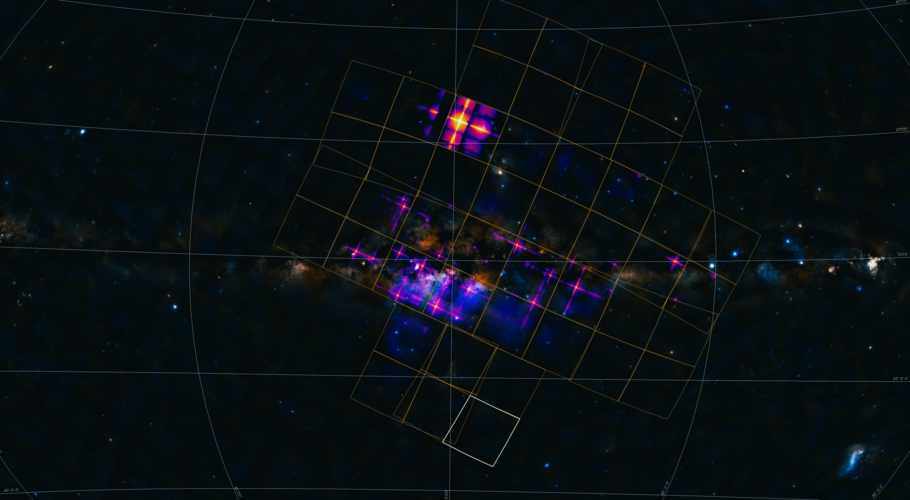
Launched on 9 January 2024, the Chinese Academy of Sciences (CAS) spacecraft Einstein Probe joins ESA’s XMM-Newton and JAXA’s XRISM in their quest to discover the Universe in X-ray light. The mission is a collaboration led by CAS with ESA, the Max Planck Institute for Extraterrestrial Physics (MPE) (Germany), and the National Centre for Space Studies (CNES) (France).
In the months since liftoff, the mission operations team has been performing the necessary tests to confirm the spacecraft's functionality and calibrating the scientific instruments. During this crucial phase, Einstein Probe captured scientific data from various X-ray sources.
These first-light images demonstrate the outstanding capabilities of Einstein Probe's two scientific instruments. The Wide-field X-ray Telescope (WXT) can observe a panorama of nearly one-eleventh of the celestial sphere in one shot, while the more sensitive Follow-up X-ray Telescope (FXT) offers close-ups and can pinpoint short-lived events caught by WXT.
“I am delighted to see the first observations from Einstein Probe, which showcase the mission’s ability to study wide expanses of the X-ray sky and quickly discover new celestial sources,” says Prof. Carole Mundell, ESA Director of Science. “These early data give us a tantalising glimpse of the high-energy dynamic Universe that will soon be within reach of our science communities. Congratulations to the science and engineering teams at CAS, MPE, CNES and ESA for their hard work in reaching this important milestone.”
The capability of the mission to promptly spot new X-ray sources and monitor how they change over time is fundamental to improving our grasp of the most energetic processes in the cosmos. Powerful X-rays are blasted through the Universe when neutron stars collide, supernovas explode, and matter is swallowed by black holes or ejected from the crushing magnetic fields that envelop them.



